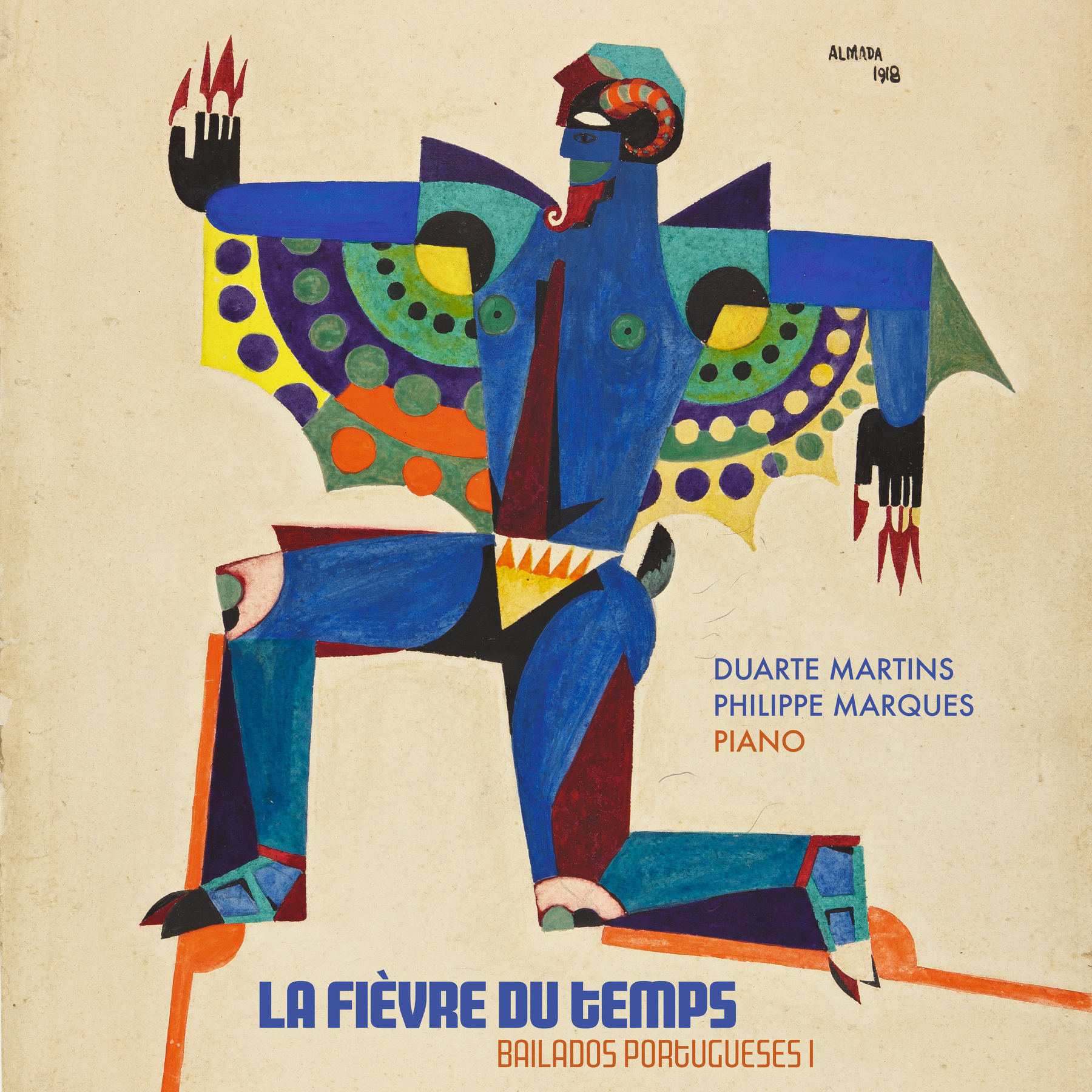La fièvre du temps

I am delighted to let you know that the album featuring my reduction of Ruy Coelho’s A princeza dos sapatos de ferro has been released! La fièvre du temps (Bailados Portugueses I) is the first offering in a series of planned recordings by the extraordinary pianists Duarte Pereira Martins and Philippe Marques dedicated to exploring portuguese repertoire for ballet and dance, placing them in dialogue with canonical works of the genre.
Besides Ruy Coelho’s incidental music, the album also features Fernando Lopes-Graça’s Paris 1937, a collection of dance-infused tableaux that harken back to the composer’s parisian sojourn, originally for two pianos and presented here four-handed in the duo’s own arrangement. Completing the album’s lineup are two other works for the ballet from around the same period of early-modernism: Ravel’s La valse — similarly arranged for piano four-hands by the interpreters — and Pétrouchka, the second attempt at the form by a certain young and up-and-coming composer you might have heard of.1
The album can now be ordered from mpmp’s online store.
Adorning the cover is a gouache rendering of one of the costumes designed for the production of A princeza dos sapatos de ferro by Almada Negreiros, one of the spearheads of Portuguese Modernism. Not just any costume, in fact: the Devil’s, worn by Almada himself on stage. A remarkable polymath, he designed the costumes, choreographed the dancing, and took on the roles of both Devil as well as Witch, another pivotal role in the plot’s structure.2 A princeza was presented at the Teatro Nacional de São Carlos, in 1918, not long after a four-month period in which Diaghilev’s Ballets Russes were stationed in Lisbon.3 Although plans for the ballet were already underway, one can comment on the influence of the company’s work (with which Almada mingled during their stay in the country) in the Portuguese artist’s output, if only to note the fauvist tones in their eclectic mix of early Modernist music and Orphic cubism. In both, we see des beaux arts intertwining with the performance arts, the latter invading the former. The parisian spirit of the early 20th century. Truly, la fièvre du temps.
-
Well, Stravinsky was only a couple of years older than I am at the time of writing. ↩
-
An illustrious example of the time-honored Portuguese tradition of having to take on responsibility for most roles in a given production, while most surely only being paid for one of them. ↩
-
The National Opera House barely functioned at the time, being solely open for business, well, for business: out for rent, hosting but a handful of privately-led initiatives throughout the decade. A princeza was one of them; two of the shows in this portuguese leg of the Ballets Russes’ tour were some of the few others. The shows were critically panned. Just a note while on the subject of time-honored traditions. ↩